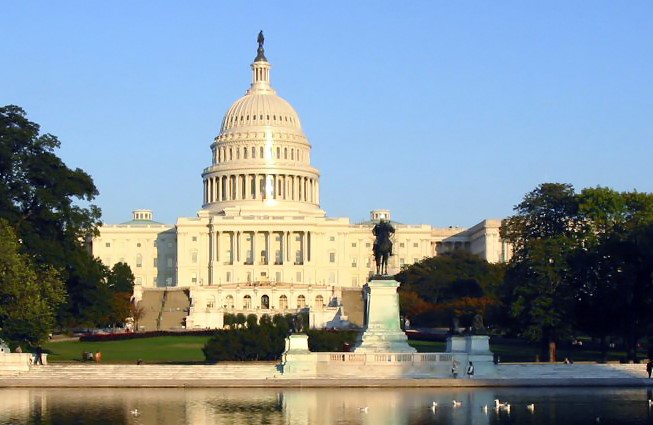Another US shutdown?
February 11, 2019 | Expert Insights

Talks between Republicans and Democrats were deadlocked just days before a deadline to avoid a second US government shutdown this year, as politicians argued over proposed limits to the country’s border forces.
Background
A government shutdown occurs when Congress fails to pass, or the President fails to sign appropriations legislation funding federal government operations and agencies. Since 1976, when the current budget and appropriations process was enacted, there have been twenty gaps in budget funding, eight of which led to federal employees being furloughed. The stand-off forced about 800,000 federal workers to go without pay temporarily; only essential employees were still required to work without pay until the government reopened.
The shutdown started on 22 December 2018 and lasted for 35 days after the Democrats refused to include funds for President Trump’s border in the continuing resolution to pay for the operations of the Federal Government. Democrats, who have taken over the House of Representatives after the November 2018 mid-terms, and some fellow Republicans insisted they will not give Trump the $5 billion he needs to construct the wall.
Analysis
Policymakers from both sides have spent the past two weeks negotiating over border security measures after President Donald Trump agreed last month to end the country’s longest shutdown and reopen the government for talks to begin.
However, as discussions reached the final stages ahead of the deadline, Republicans said they had reached a standstill over the number of detention beds that should be allocated to the US Immigration and Customs Enforcement agency.
Richard Shelby, the senator who leads the Republican negotiating team, said: “I think the talks are stalled right now. I’m hoping we can get off the dime later today or in the morning because time is ticking away. “But we’ve got some problems with the Democrats dealing with ICE, that is detaining criminals that come into the US and they want a cap on them. We don’t want a cap on that.”
John Yarmuth, the Democratic chairman of the House budget committee, said: “The big problem here is this has become pretty much an ego negotiation. This really isn’t over substance.“What needs to happen is Secretary [Kirstjen] Nielsen [the homeland security secretary] needs to come to the Hill and lay out her plans and be questioned on them, so that we can figure out and try to come to an agreement on what the necessary security provisions should be, and then we’ll fund them.”
The US is still reeling from the record 35-day shutdown earlier this year when Mr Trump refused to reopen the government unless Democrats agreed to $5.7bn in funding for a border wall. The shutdown knocked billions of dollars off the US economy and underlined the entrenched party divisions which were likely to continue for the next two years in the run-up to the 2020 election.
Mr Trump eventually gave way in his demands and agreed to reopen the government for three weeks while Republicans and Democrats negotiated over a wider package of border security measures.
Those talks looked close to a successful conclusion late last week, with officials saying both sides had agreed on a series of measures worth up to $2bn, which would include funding for barriers on the southern border.
However, talks appeared to have stumbled during the weekend over the issue of beds for ICE, the agency that many Democrats blame for enacting the contentious policy of separating migrant families at the border. Some Democrats, including Alexandria Ocasio-Cortez, the New York congresswoman, have called for ICE to be abolished altogether.
Mick Mulvaney, the acting White House chief of staff, said he had expected a draft agreement to be published as soon as that afternoon.
Assessment
Our assessment is that a second shutdown within a month would be problematic for the US as this would severely affect many essential services. We believe that President Trump is unlikely to withdraw his primary demand to fund the border wall.
Image courtesy: F.Malotaux (https://commons.wikimedia.org/wiki/File:USCapitol.jpg), „USCapitol“, https://creativecommons.org/licenses/by-sa/2.5/legalcode








Comments